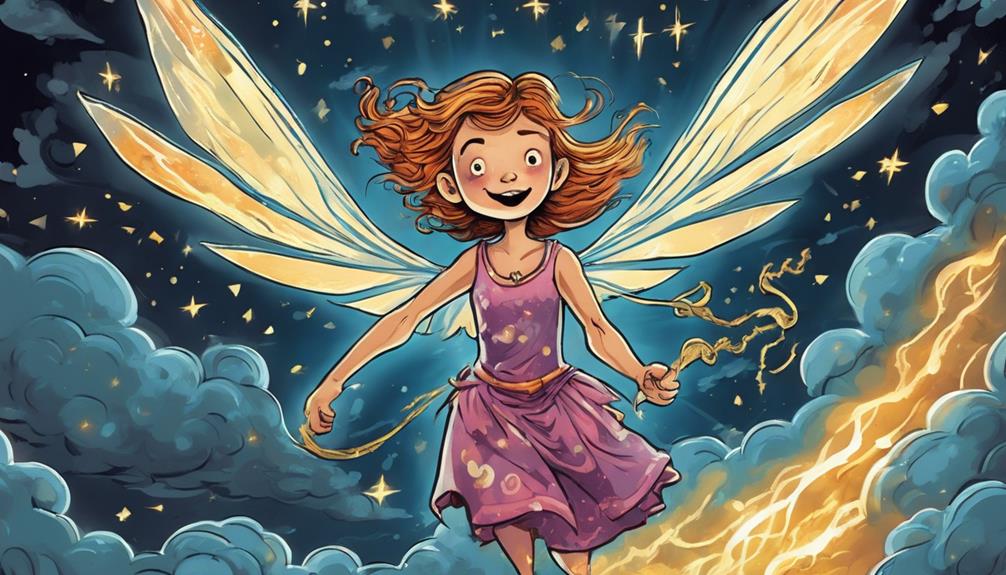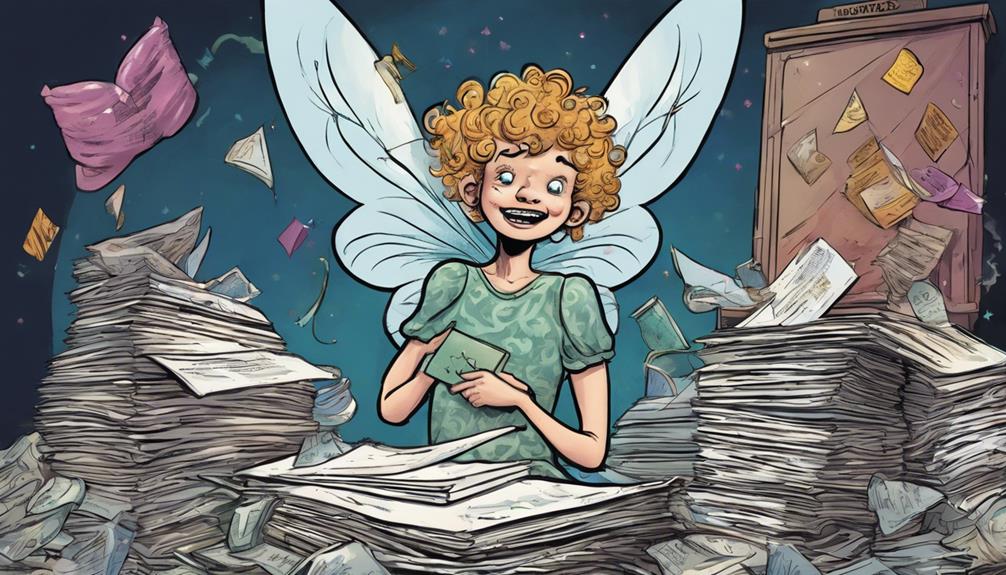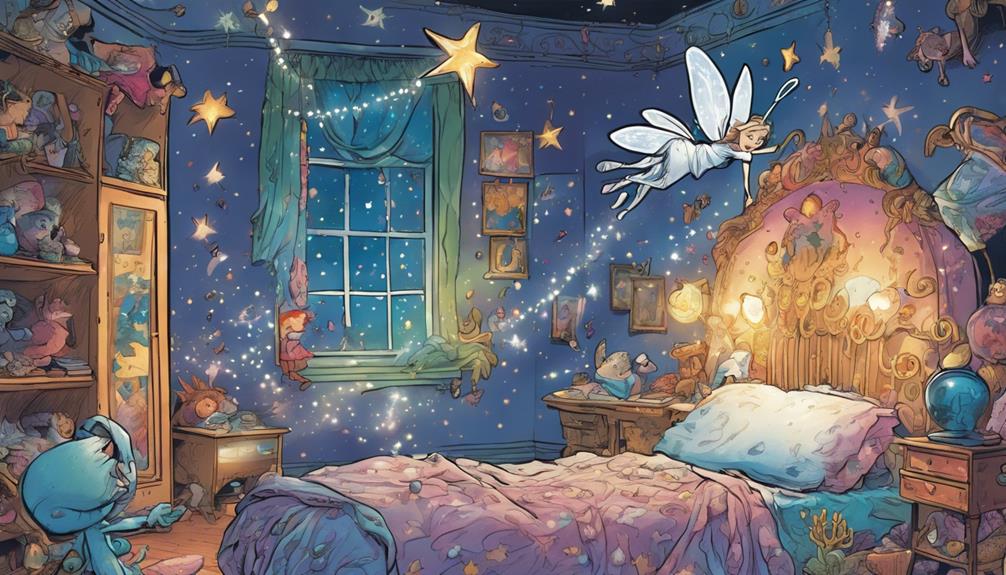You might be surprised to find that the Tooth Fairy has fascinating allies from various cultures. In France, La Petite Souris, a helpful mouse, collects teeth, while in Brazil, children toss lost teeth to birds, believing only healthy ones get gifts. In India, sparrows play a part in the tradition by finding teeth placed on rooftops. Parents also enhance the magic by leaving notes and creating special moments. These customs are not just about losing teeth; they symbolize growth and community. There's even more to discover about these friendships and their meanings in different cultures.
Key Takeaways
- The Tooth Fairy's allies vary globally, including La Petite Souris in France and Ratoncito Pérez in Spain, both exchanging teeth for gifts.
- Brazilian children believe birds collect their teeth, emphasizing a magical connection with nature during the tooth exchange.
- In India, sparrows are seen as benevolent spirits that bring good fortune when teeth are placed on rooftops.
- African cultures feature various animals, such as lizards, symbolizing spiritual growth and community beliefs surrounding tooth loss.
Global Tooth Fairy Traditions
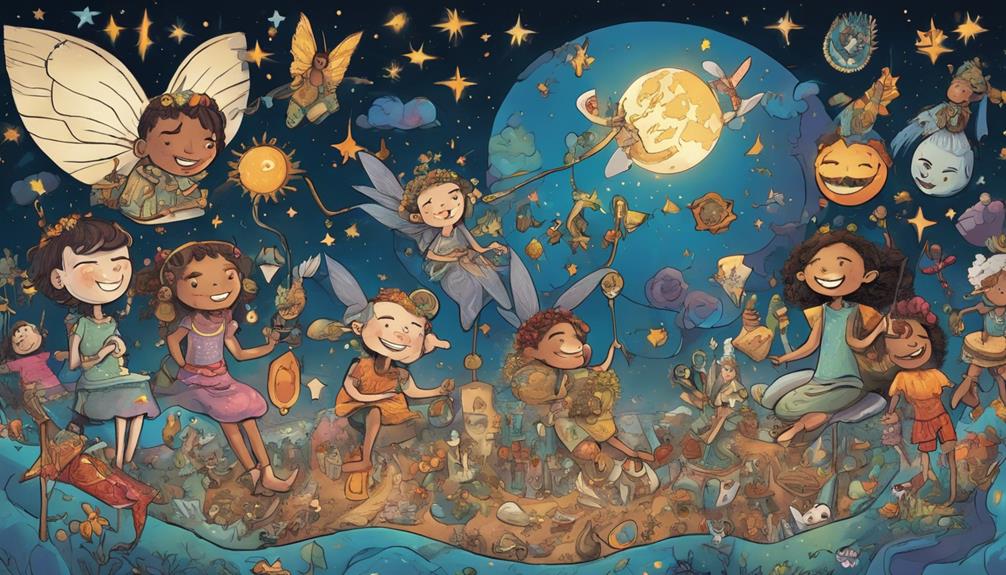
Across the world, kids celebrate the loss of their baby teeth with unique traditions, each featuring a charming character that exchanges teeth for treats. In the U.S., the Tooth Fairy takes center stage as a small, winged figure who leaves money or toys under your pillow. This delightful tradition resonates not just in America, but also in countries like England, Canada, and Australia, where similar practices thrive.
However, the Tooth Fairy isn't the only tooth collector out there. In France, La Petite Souris, a little mouse, swaps teeth for coins or candy, while Spain's Ratoncito Pérez plays a similar role. Meanwhile, Brazilian children toss their lost teeth outside, hoping birds will collect them, symbolizing a gift exchange.
In some African cultures, kids bury or toss their teeth onto roofs, each practice steeped in local beliefs about growth and renewal. These diverse customs highlight a global love for celebrating tooth loss, often featuring animal helpers like mice and birds.
Unique Customs Around Tooth Loss
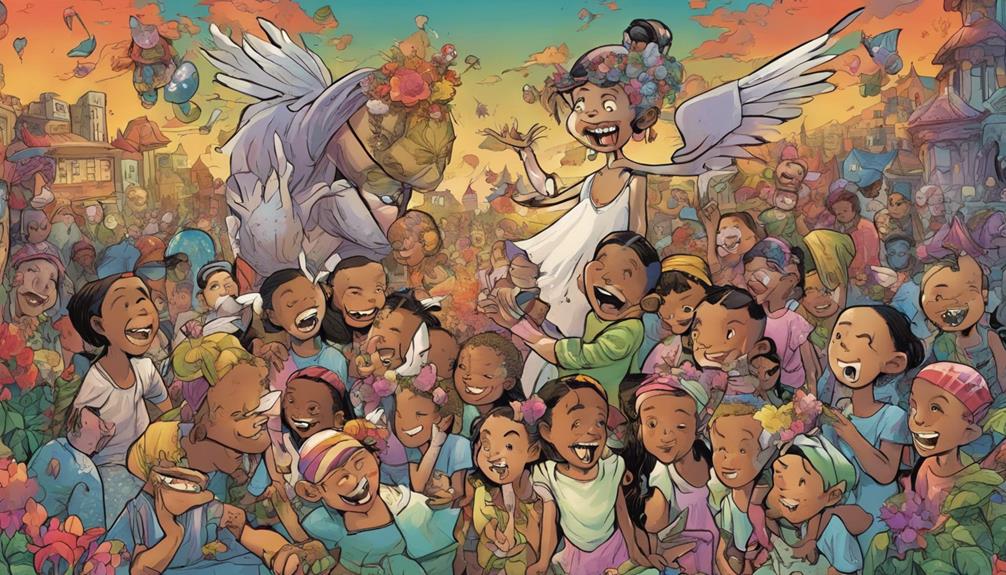
When you think about losing teeth, customs around the world offer fascinating insights.
In Brazil, children toss their teeth outside for birds, while in India, sparrows are welcomed to rooftops for a special purpose.
Meanwhile, various African practices involve burying teeth or tossing them, showcasing unique beliefs tied to nature and growth.
Brazilian Tooth Traditions
In Brazil, children enthusiastically toss their lost teeth outside for birds to collect, believing that only clean and healthy teeth will be exchanged for gifts. This tradition highlights the importance of dental hygiene, as kids are encouraged to care for their teeth to guarantee the birds take them. When you lose a tooth, you might feel excited about the possibility of a gift but also think about keeping your teeth sparkling clean.
As part of this custom, children often leave their teeth in specific spots, like under a pillow or in designated areas, to make it easier for the birds to collect them. While tossing the tooth, they usually make a wish for new, strong teeth to grow in, symbolizing hope and a bright future.
This act connects them to nature, emphasizing the belief that animals, particularly birds, play a significant role in the cycle of tooth loss and renewal.
Indian Tooth Customs
Children in India often place their lost teeth on rooftops for sparrows to find, believing this act brings good luck and guarantees strong new teeth grow in their place. This unique custom emphasizes a deep connection to nature, as sparrows are seen as symbols of good fortune.
When you participate in this ritual, you're not just discarding your baby teeth; you're engaging in a cultural practice that signifies hope for healthy dental growth. The act of giving teeth to birds is believed to assure proper growth for future teeth, showcasing a communal aspect that involves family support during this change.
As you share this moment with your loved ones, you're reinforced with the importance of caring for your dental health. This tradition also reflects broader themes of childhood innocence and maturity. By placing those baby teeth on the rooftop, you're learning to embrace change and responsibility.
Each lost tooth marks a step toward growing up, and the involvement of family members makes the experience even more meaningful. In this way, Indian tooth customs beautifully blend nature, culture, and the journey of childhood.
African Disposal Practices
Many African cultures have unique customs surrounding tooth loss, often involving throwing lost teeth onto roofs to promote the growth of strong new ones. When you've got a loose tooth, you might be surprised to learn that children in some regions believe that tossing their top teeth onto the roof attracts benevolent spirits. This act signals that they're ready for strong, new teeth to take their place.
For bottom teeth, the practice shifts; they're typically buried in the ground. Some traditions even warn against letting a lizard find your lost tooth, as it's believed that this can hinder the growth of new teeth. These customs highlight how deeply rooted spiritual beliefs shape children's understanding of dental health.
Across different African nations, you'll find a rich tapestry of practices related to tooth loss, each reflecting unique cultural perspectives. Whether it's throwing teeth to the roof or burying them, these rituals emphasize a connection between losing teeth and the natural cycle of growth.
Ultimately, they reinforce the idea that losing a tooth isn't just an end but a gateway to something stronger and healthier.
Animal Allies of the Tooth Fairy

Animal allies like mice, birds, and lizards play a magical role in tooth traditions around the world, helping to create cherished memories for kids as they lose their baby teeth. These creatures act as helpers to the tooth fairies, ensuring that the changeover from baby teeth to adult ones is filled with wonder.
In France, La Petite Souris collects lost teeth and leaves gifts in exchange.
In Brazil, kids toss their teeth outside for birds, symbolizing a magical exchange.
In India, sparrows are believed to find teeth placed on rooftops, representing hope for new growth.
In some African cultures, lizards finding teeth can prevent new ones from growing, showcasing diverse beliefs.
These animal allies emphasize the connection between nature and childhood innocence. They symbolize care and support in the magical traditions surrounding tooth fairies.
The integration of these creatures into tooth customs reflects shared cultural significance across regions, highlighting the importance of community and the celebration of growing up through the loss of baby teeth.
Embracing these enchanting allies adds an extra layer of magic to the experience, making each moment unforgettable for children.
The Role of Parents

Parents play an essential role in preserving the magic of the Tooth Fairy tradition, ensuring that each lost tooth becomes a memorable milestone in a child's life. They provide not just financial rewards but also emotional support, helping children navigate the change of losing teeth. By creating engaging narratives, parents alleviate fears and foster a positive attitude towards dental health.
Here's a look at how parents contribute to this enchanting experience:
| Contribution | Purpose | Impact on Child |
|---|---|---|
| Leaving notes from the Tooth Fairy | Adds a personal touch | Fosters imagination and excitement |
| Creative hiding spots for teeth | Enhances the surprise factor | Creates lasting memories |
| Sharing personal stories | Builds connection and trust | Encourages open discussions |
| Financial compensation | Reinforces the importance of the milestone | Teaches value in experiences |
| Celebrating the event | Acknowledges growth and change | Instills a sense of achievement |
Through these actions, parents not only make the experience enchanting but also reinforce important life lessons, bonding with their children while celebrating this rite of passage.
Cultural Significance of Tooth Loss

When you think about losing a tooth, it's fascinating to see how different cultures celebrate this milestone.
From the Tooth Fairy in the U.S. to playful mice in Europe, each tradition carries unique symbolism and meaning.
These customs not only mark a rite of passage but also teach kids important lessons about dental health and care.
Global Tooth Traditions
Tooth loss is celebrated around the world through various traditions that reflect cultural beliefs and values, altering a simple milestone into a meaningful rite of passage.
In the U.S., children enthusiastically await the Tooth Fairy, who leaves money or small gifts under pillows in exchange for lost teeth. This tradition symbolizes the shift from childhood to maturity.
Other cultures have their own enchanting customs:
- In France, La Petite Souris, a magical fairy mouse, collects teeth and leaves coins or candy.
- In Brazil, children toss their lost teeth outside for birds to collect, emphasizing healthy teeth as gifts.
- In India, children place their lost teeth on rooftops for sparrows, symbolizing hope for new teeth and a connection to nature.
These diverse practices not only highlight the importance of dental milestones but also reveal how different cultures celebrate growth and change.
Symbolism in Cultures
Losing a baby tooth often marks an important milestone in childhood, symbolizing growth and the change toward maturity across cultures. Different cultures celebrate this shift in unique ways, reflecting their values and beliefs surrounding tooth loss.
| Country | Custom | Symbolism |
|---|---|---|
| Brazil | Tossing teeth outside for birds to collect | Importance of dental hygiene |
| India | Placing lost teeth on rooftops for sparrows | Hope for the growth of new teeth |
| Various Africa | Throwing or burying teeth | Strength and change to adulthood |
These customs emphasize a shared understanding of the significance of teeth in childhood. For instance, in Brazil, children believe that only clean teeth will be taken, reinforcing the importance of oral care. In India, the act of placing teeth for sparrows connects children to nature, symbolizing hope and renewal. African traditions often involve specific disposal methods, reflecting beliefs about strength.
Educational Value of Customs
Celebrating the loss of a baby tooth serves as a valuable educational opportunity, teaching children about growth, cultural traditions, and the importance of oral hygiene. The Tooth Fairy, a beloved figure in many homes, embodies these lessons, making the experience both exciting and informative.
Through the rituals surrounding tooth loss, children learn:
- Cultural Significance: Understanding that various cultures celebrate tooth loss differently fosters appreciation for diversity.
- Rites of Passage: Recognizing tooth loss as a milestone highlights the journey of growing up.
- Health Awareness: Emphasizing the importance of maintaining healthy teeth encourages good oral hygiene habits.
These customs create a rich tapestry of meanings that help kids grasp the values of health, growth, and community.
When you engage with these traditions, you're not just participating in a playful ritual; you're also instilling lifelong lessons about care and responsibility.
The Tooth Fairy isn't just a whimsical character—she's a guide, teaching your child valuable lessons that extend well beyond the domain of lost teeth.
Fun Facts and Trivia

The enchanting tale of the Tooth Fairy varies widely around the world, featuring unique customs and charming animal helpers that delight children everywhere. Did you realize that in some cultures, mice and birds play a significant role in this delightful tradition? Here's a quick look at some captivating facts:
| Country | Tooth Fairy Equivalent | Custom |
|---|---|---|
| France | La Petite Souris | A mouse collects teeth and leaves small gifts. |
| Brazil | N/A | Children toss teeth outside for birds to collect. |
| India | N/A | Kids place lost teeth on rooftops for sparrows. |
In Spain, Ratoncito Pérez, another mouse, also exchanges teeth for treats. In contrast, Brazilian children believe that healthy teeth deserve gifts from nature. Many African traditions involve throwing teeth on rooftops, with some believing that lizards finding these teeth will guarantee dental health. Curiously, the modern Tooth Fairy emerged in the early 1900s, merging fairy imagery with earlier mouse traditions, creating the enchanting figure we recognize today. Isn't it marvelous how the Tooth Fairy's story adapts to different cultures?
Community Support and Engagement

Engaging with community support enhances the Tooth Fairy tradition, making the experience more magical and memorable for children. When parents, schools, and local businesses come together, they create a vibrant environment that celebrates this cherished rite of passage.
Here are some ways community support enriches the Tooth Fairy experience:
- Rituals at Home: Parents encourage children to create special tooth placement rituals, boosting excitement.
- Dental Education: Local dental offices provide resources that emphasize the importance of oral hygiene, ensuring healthy teeth for the Tooth Fairy's visits.
- Curriculum Integration: Schools often include tooth fairy themes in lessons, fostering discussions around dental health and cultural traditions.
With this community support, you not only enhance the excitement surrounding the loss of a tooth but also instill valuable lessons about dental care. By creating a network that celebrates these moments, you're ensuring that the magic continues for generations to come.
Frequently Asked Questions
What Does Ratoncito Perez Do With the Teeth?
Ratoncito Pérez collects children's lost teeth, often taking them to a special place. There, he uses the teeth to build castles or other structures, creating a magical experience that celebrates the value of those teeth.
Who Are the Tooth Fairies' Friends?
Did you know over 90% of kids believe in the Tooth Fairy? She's got friends like Mini-Fairies, mice, and even birds in different cultures, all helping her keep the magic of childhood alive. The Tooth Fairy has been around for centuries and has faced many tooth fairy challenges throughout the years, but she always manages to come through for the kids. Children all over the world eagerly await her visits, placing their lost teeth under their pillows and waking up to find a special surprise in the morning. The belief in the Tooth Fairy is a cherished tradition that brings joy and excitement to children as they grow up.
Who Is the Tooth Fairy in Rise of the Guardians Va?
In "Rise of the Guardians," the Tooth Fairy is voiced by Isla Fisher. She brings Toothiana to life with a playful and nurturing tone, perfectly capturing the character's grace and her dedication to collecting children's teeth.
What Is the Real Story of the Tooth Fairy?
The real story of the Tooth Fairy blends ancient customs and modern folklore. As you lose teeth, you might find a coin under your pillow, symbolizing growth and the magical change into adulthood.
Conclusion
In exploring the enchanting world of the Tooth Fairy, it's clear she's not alone in her mission.
Did you know that, on average, parents spend about $4.70 per lost tooth in the U.S.? That's a lot of magic!
From unique customs to animal allies, the traditions surrounding tooth loss weave a rich tapestry of cultural significance.
So next time your child loses a tooth, remember the surprising support the Tooth Fairy has, making the experience even more special.

